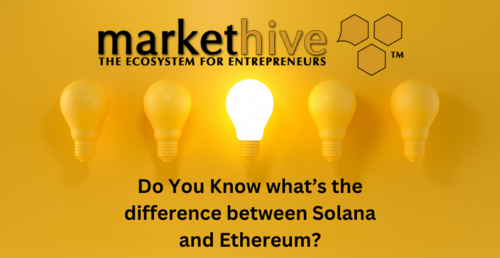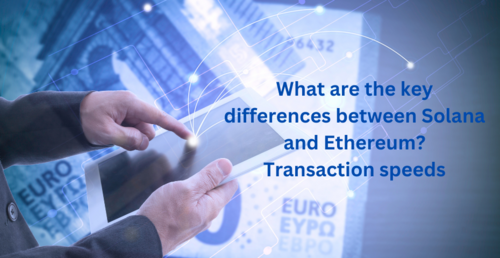
Do You Know what’s the difference between Solana and Ethereum?

Solana and other newer cryptocurrency projects have inevitably been compared to Ethereum, the original platform for smart contracts and decentralised applications (dApps).
These new platforms are ultimately similar in what they offer, but as with companies in any industry that compete for their share of the same market, there are nuances that set them apart from one another.
What are the key differences between Solana and Ethereum?

It’s expected that the Ethereum Merge will greatly improve transaction processing speeds of Ethereum in future, but at the moment, the network can manage about 15 transactions per second (TPS), whereas Solana is in a league of its own at 50,000+ TPS.
Super fast processing speeds should mean that the network is more equipped to scale as user numbers increase.

In mid-September 2022, Ethereum switched from a proof-of-work consensus mechanism, where miners validate transactions on the network, to proof-of-stake, where stakers do the validating. It was the first step in speeding up processing speeds on Ethereum, which will allow it to scale in future.
The Solana founders identified what they saw to be shortcomings in many networks’ ability to handle transaction volume and the speed they are able to do this. In answer to this, they devised a unique method called proof-of-history (POH), which is a process built into the proof-of-stake model.
This way of recording transactions on the Solana network creates a timestamp for each transaction entering the network, which means that transactions can be tracked and processed in the correct order, unlike other methods, which have to do this after the fact. Thanks to POH, The transaction processing speeds achievable on the Solana network sets it apart from other networks.

Solana was designed in such a way that the network’s transaction fees are currently among the lowest in cryptocurrency. These fees, known as gas fees, are paid by users when, say, minting an NFT, or using the blockchain in another way. Think of it as paying delivery fees for a fast-food order.
Ethereum’s high gas fees have long been the bane of Ethereum users, but the process started by the Merge is expected to lower these in future.

Almost all of today’s crypto projects start off with a token sale, similar to when a private company goes public and sells shares to public investors. Before this happens, though, the founders usually divide a share of the initial cryptocurrency among themselves.
According to data by Messari, almost 50% of Solana in the initial token distribution was allocated to the founders, the Solana team and venture capital investors, compared to 15% of Ether, Ethereum’s native cryptocurrency.
Some detractors argue that while Solana is a public blockchain, the weight of the holdings by Solana insiders makes it less decentralised than a network like Ethereum.
Then there’s also centralisation among the validators staking on the Solana network. Solana’s validators number in the thousands, whereas those on Ethereum run into the hundreds of thousands.

Ethereum may become a better store of value in future, as the supply of ETH following the Merge is expected to drop drastically as coins are confirmed by stakers instead of miners. This fact, combined with Ethereum burning ETH with every transaction, could provide Ethereum with a stronger deflationary mechanism in future, even though there is no maximum supply set for the minting of new ETH.
Similar forces are at work in the Solana ecosystem. There’s also no cap on how many new SOL is created, but with every SOL created, a certain portion is burned.
.png)
About: Andries vanTonder
He is a Serial Entrepreneur, an Enthusiastic supporter of Blockchain Technology and a Cryptocurrency Investor
Find me at my Markethive Profile Page | My Twitter Account | My Instagram Acount | and my Facebook Profile.
